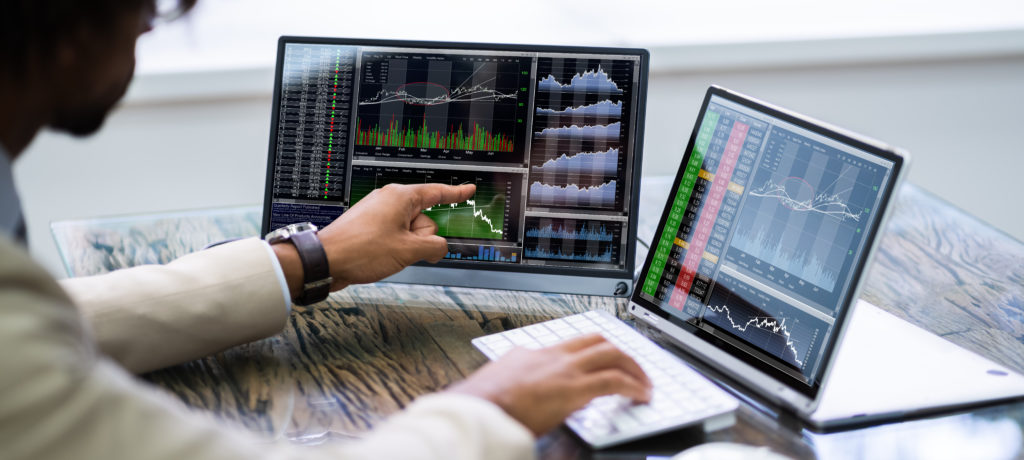Trade is the process of exchanging goods and services for other goods and services. The term “trade” may refer to bartering, exchange of money, or to a profession that involves trade in some sense. For example, one might trade stocks or commodities with someone else who possesses them. Trade occurs when two people each have what the other wants, so they agree to swap items instead of using money transactions to buy things from each other.
Trade has evolved as an alternative form of currency known as commodity currency such as tobacco leaves, maize (corn), shells (used by Native Americans), and even wampum beads used during early colonial times throughout North America’s Atlantic coast region; albeit forms quite different than today’s mainstream currencies worldwide like gold, silver, paper money, and coins.
What is World Trade Organization?
The World Trade Organization (WTO) is the only global international organization dealing with trade rules between nations. At its heart are the WTO agreements, negotiated and signed by the bulk of the world’s trading nations and ratified in their parliaments.
The goal is to help producers of goods and services, exporters, and importers conduct their business in the international market. It can also help governments work together more closely as they seek better ways for all people to share our planet’s resources sustainably so that future generations may benefit too.
These benefits include economic growth, tourist trade, poverty reduction through higher incomes where workers receive a fair reward for their labors, improved environmental protection, healthy diets through sustainable production methods safeguarding plant genetic resources for food security needs, and access to life-saving medicines.
The main functions are the following:
- Promoting fair trade negotiations.
- Monitoring trading practices.
- Regulating fair trade standards.
- Helping governments to join together with common rules on international commerce.
- Settling disputes between members.
What is a particular trade?
A particular trade is a type of regular business or profession that involves the trading, buying, and selling of one person, company, or organization with another for profit. There are many different types of trades such as: retailing (selling goods to consumers), wholesaling (buying goods from manufacturers and transporting them to retailers), manufacturing (making products using labor and machinery), among others.
What is international trade?
International Trade is the movement of goods, services, and resources across international borders or territories. It can occur between two traders, businesses, and other organizations; trading may be done as individuals (private traders) or by a business/company (commercial trader).
What are the potential benefits of international trade?
One benefit of international trade is that countries can have access to resources that they cannot produce themselves or are not plentiful enough within their borders; if a resource isn’t indigenous to one nation but abundant elsewhere, importing this item allows for greater use and less waste than would result from domestic production alone.
Goods produced abroad may cost far less than local alternatives due to differences between labor costs or taxes. As a result, people who live outside these nations will import them instead – this means everyone gets what they want (cheap clothes) without having to produce them themselves.
What is Global Trade?
Global trade refers to international exchange, which occurs when people buy items made in foreign countries; this includes services like tourism and physical objects like foodstuffs, cars, clothes, etc.
The process often starts with an exporter who sends their product abroad either directly through exporting or indirectly through Foreign Direct Investment. Then, it is imported by an importer in another country. Neither the exporter nor the importer need be of that country. However, it is often more convenient to trade with someone nearby.
Another benefit of trading internationally is that countries can have access to resources which they cannot produce themselves or are not plentiful enough within their borders. A resource isn’t indigenous to one nation but abundant elsewhere; importing this item allows for greater use and less waste than domestic production alone.
Also, goods produced abroad may cost far less than local alternatives due to differences between labor costs or taxes, so people who live outside these nations will import them instead – this means everyone gets what they want (cheap clothes) without having to produce it themselves.
What is domestic trade?
Domestic trade is the trading of goods and services between businesses, individuals, and other organizations within a specific country. It can be done person to person, business to consumer, or business to business.
The benefits of domestic trade are that the country has control over what is being traded, and there is less chance of an imbalance in exports/imports than international trade.
Domestic traders also understand how much things cost as they will not need foreign currency, which may fluctuate significantly during trading periods. Also, due to lower shipping costs, domestically produced goods are often cheaper than imported items making them more affordable for consumers within their borders.
What is free trade?
Free trade is the concept of eliminating barriers between nations so that goods may flow freely from one country to another without being taxed or regulated by intervening governments. It can include labor movements, migration, capital flows where money may be invested in foreign enterprises for a business deal; intellectual property rights – copyrights on books, music recordings, or computer programs must be honored worldwide, etc.
This idea was formalized during the early 19th century. Adam Smith’s Wealth Of Nations, published in 1776, advocated free trade, which became popular today, especially the concepts of comparative advantage and absolute advantage.
“If two countries can produce more than one type of good, then each country should specialize in the production of those goods that they are best at producing relative to other goods.” – David Ricardo 1817.
Free trade is known as “absolute advantage.” If you have a particular skill set or talent versus someone else who does not possess this ability, for example, you would be able to manufacture something faster than your counterpart because it’s what comes naturally for you to do so; hence, an absolute advantage exists between both individuals.
You may out-compete them easily simply by following through on whatever task needs completion first without even breaking much sweat since doing so effortlessly helps save time too!
Why does someone need trading?
People need trading because they cannot produce everything they want or require within their borders; if a resource isn’t indigenous to one nation but abundant elsewhere, importing this item allows for greater use and less waste than domestic production alone.
Also, goods produced abroad may cost far less than local alternatives due to differences between labor costs or taxes, so people who live outside these nations will import them instead – this means everyone gets what they want (cheap clothes) without having to produce it themselves.
Another benefit of trading internationally is that countries can have access to resources that are not plentiful enough in their own country, making it easier on the population when items are readily available at reasonable prices, making trade an essential element in society today.
What is a trade route?
A trade route is the shortest distance between two places on land or at sea.
In general, they follow established paths from one location to another for commercial purposes such as transporting goods and services which could be traded over long distances like spices (cloves, pepper), gems (diamonds), and silk; establishing new trading posts and other facilities along these pathways where travelers may regularly stop to restock supplies especially food items necessary for traveling; etc.
The routes themselves often became debatable territories during times of war among various civilizations throughout history. The Silk Road was an ancient Eurasian trade route that existed around 200 BC as far as Han dynasty China with many informative guides written about it too, including the book by Marco Polo.
“The Silk Road was a network of trade routes that were central to cultural interaction through regions of the Asian continent connecting East, South, and Western Asia with North and Mediterranean Europe.” – Wikipedia 2018.
A variety of goods could be found along this pathway, including spices (cloves), gems (diamonds), and silk.
What is a trade barrier?
Trade barriers are government-imposed restrictions on the international exchange of goods, services, and resources. These can be taxes or tariffs that increase the cost of imports from other countries to subsidize locally produced products for consumption at home; quotas limiting how many units may enter a country per year based upon set criteria such as monetary values assigned according to an import’s share of total domestic production, etc.
In contrast, there have been more liberal policies implemented since World War II that favor free-market economies where these obstacles are removed altogether to facilitate more significant degrees of freedom between trading partners worldwide.
It allowed capital markets, primarily financial firms – banks & investment companies responsible for managing made by individuals with surplus funds saved over time and used to purchase assets like stocks & bonds, etc. – to rise as a result of the greater levels of competition that follows once barriers are removed altogether for good!
What is the trade’s effect on the economy?
Trade has a significant effect on the economy. Trade allows people to buy and sell goods, services, and resources worldwide which causes an increase in economic activity generated by doing so, subsequently promoting increased employment levels for those involved directly or indirectly with trading activities.
Suppose more money is being circulated globally as this occurs. In that case, it should stimulate workers’ wages too because there are more jobs available than would otherwise result from domestic production alone – especially if labor costs remain unchanged.
Foreign trade allows a country to reduce its imports and increase exports which means that the money spent on foreign goods increases in value.
What are the harmful effects of trade?
There are adverse effects of trade. Countries can lose jobs because they may not be able to compete with other countries with lower wages, and therefore, the cost of their products is cheaper than yours. This makes it hard for workers who may want new jobs but cannot find any due to companies moving overseas where labor costs less, which results in job loss.
Trade wars can also occur between two or more nations unbalancing international trade relations as tariffs & quotas get introduced then removed again depending upon political considerations by those governments involved, sometimes resulting in a “trade war” if this situation continues long enough – which resulted in a significant decrease in exports from South Korea to Japan.
Another example is that when President Trump announced tariffs on steel and aluminum, the European Union retaliated by placing $300 billion of US goods under a tax which then prompted Trump to put more restrictions on imports too, including cars & trucks, triggering yet another trade war between these two nations – it’s up to them if they want this situation resolved peacefully or not though it remains unclear how long either party will continue fighting with one another over this matter before eventually deciding their differences for good because global economies are so closely tied together nowadays.
Trade relations have changed throughout history as well. For example, China had many trading partners during ancient times, but today, most countries do not trust each other all kinds of economic damage get done during these times. For example, Japan put restrictions on imports from South Korea after a fight over territory, so it’s up to the leaders of these countries involved with this dispute whether they want to resolve their differences or not.
Slave trade existed in human history too. The Slave trade goes back to the ancient times of Sumerians. They used slaves for labor and even had slave laws similar to those implemented by Hammurabi; however, slavery was not exclusive only to these regions as most civilizations throughout all periods have practiced it, including Ancient Greece & Rome, where a large proportion of their population were slaves.
What are the positive effects of trade?
The positive effects of trade are there are more jobs available when a country trades with others for goods & services plus it makes prices lower which benefits consumers. It stimulates workers’ wages too because there are more jobs available than would otherwise result from domestic production alone – especially if labor costs remain unchanged.
The world economy improved because of trade as well. For example, after the Cold War ended with the collapse of the Soviet Union in 1991, Russia & Eastern Europe began to integrate themselves into Western European economies due to their lack of other options at this point.
Ultimately, these gains accrue to both consumers who benefit from more incredible selection & lower prices.
Producers can now expand output since they have access to relatively cheap inputs not previously accessible before expanding their business operations internationally, domestically, or abroad depending upon whether you’re talking about goods or services.
How does trade works for businesses?
Trade means a company can increase sales both domestically and abroad. For example, if a company operates in the US only, it can sell to its immediate neighbors or perhaps even further out. Still, once they start selling overseas domestically & internationally, businesses need to make sure their product is suitable for that specific consumer base.
For instance, many people eat sushi here in America, which does not mean every person will want to buy this food though some might find it tasty. At the same time, others may not like eating raw fish at all, so one has to consider what consumers demand when producing goods for sale.
Another good example of how trade works is Apple Computers – most products made by Apple are manufactured inside China because labor costs less there compared with where they’re produced currently located within California’s borders; however, these kinds of decisions are not made lightly by any company because they need to make sure their product is suitable for the consumer who’s buying it.
Modern traders use several different methods to get their products from one location to another.
For example, trade between countries can occur by sea using large cargo ships that pass through the Panama Canal, for instance, or even via airplane. Still, this mode of transportation is not very reliable due to weather conditions which could cause delays, so it’s generally reserved only for high-value or time-sensitive goods.
Another form of trade is done by land, which can be carried out by train, truck, or even foot. Still, these methods are not as efficient as using a ship because cargo has to transfer from one vehicle to another at various points – especially during overland transportation between countries too.
The final mode of trade is done by pipelines, such as what occurs with the transfer of oil & natural gas between countries or even states – it can be both hazardous to workers and environmentally unsound.
In conclusion, trade is the international exchange of goods & services. It creates jobs, stimulates wages for workers, improves living standards via lower prices while helping companies expand their business domestically and internationally. If you need more information about trade, EdFed offers Investing programs that have more information on the best trades that you can start on.















